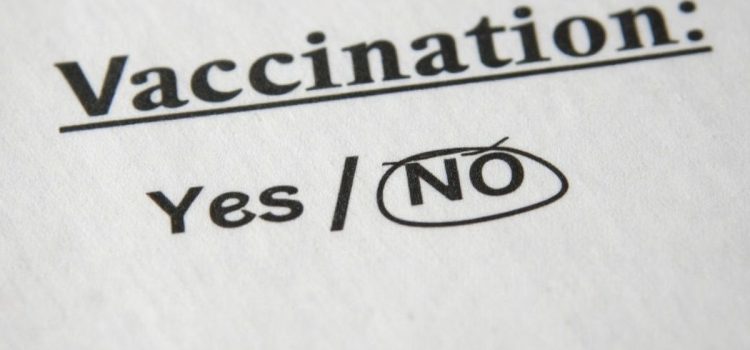
This is a free excerpt from one of Shortform’s Articles. We give you all the important information you need to know about current events and more.
Don't miss out on the whole story. Sign up for a free trial here .
Why have so many Americans lost interest in Covid-19 vaccines? What role do politics and age play in vaccination decisions?
Covid vaccination rates have dropped significantly since the early days of the pandemic, with only 28% of US adults receiving the shot in the spring of 2024. The reasons relate to the perception of risk, political party affiliation, and age.
Keep reading to explore the fascinating intersection of public health, politics, and personal choice that continues to shape vaccination trends across the country.
Why Covid Vaccination Rates Are So Low
The first mRNA vaccines against Covid-19 were hailed as a major scientific achievement, especially because they were produced much more quickly than expected. They were also more effective than anticipated at preventing severe infections that lead to hospitalizations and deaths. More than 80% of Americans have received at least one dose of a Covid-19 vaccine. Yet recent shots have attracted comparatively little interest: In the spring of 2024, just 28% of US adults said they’d received the latest Covid-19 vaccine. At the time, 44% of adults had gotten a flu shot within the previous six months. Public health experts have cited several reasons why the Covid vaccination rates are so low among Americans.
#1: People Don’t Perceive Covid-19 as a Risk
First, a low level of interest in the latest Covid-19 vaccines coincides with the perception, among many Americans, that the pandemic is over. Just 20% of Americans view Covid-19 as a major threat to the health of the population. Only 10% feel very concerned about catching the virus and becoming hospitalized themselves. This perception of risk plays an important role in people’s willingness or hesitancy to get vaccinated. In research published in October 2023, 81% of respondents who thought they had a high risk of catching the flu intended to get vaccinated. Similarly, 78% of those who thought they had a high risk of being infected with Covid-19 planned to get an updated vaccine.
#2: Political Party Affiliation Influences Vaccine Views
A person’s perception of the risks posed by a flu or Covid-19 infection isn’t the only factor that influences how willing they are to get vaccinated against one or both viruses. Second, as was true in earlier phases of the Covid-19 pandemic, researchers find that a person’s political affiliation plays a key role in their concern over the virus—and whether they’ve been recently vaccinated against it. Polls have pointed to a large “partisan gap” between the reported Covid vaccination rates for Democrats and Republicans. While researchers observe a smaller partisan gap in views of the virus now than earlier in the pandemic, Democrats (42%) remain more likely than Republicans (15%) to say they’ve received an updated Covid-19 vaccine.
#3: Age Influences Vaccine Choices
Finally, age also plays a significant role in vaccine choices. In both parties, older adults are more likely than younger adults to have received an updated Covid-19 vaccine. But while it’s narrowed in other age groups, the partisan gap in vaccination status has widened among adults ages 65 and older. (This is one of the age groups most at-risk of severe and life-threatening Covid-19 infections.) While large majorities of both Democrats and Republicans in this age group received a vaccine when they first became available in 2021, Covid vaccination rates have fallen much more precipitously among older Republicans than among older Democrats—66% of Democrats 65 and older have received an updated Covid-19 vaccine, compared to just 24% of Republicans in the same age group.
Are Vaccination Views—and Rates—Changing?
Researchers say that, prior to the Covid-19 pandemic, they saw only a small partisan gap in flu vaccination rates and little partisan difference in views on vaccination. (In February 2020, 58% of Democrats and 54% of Republicans reported receiving a recent flu vaccine, a small gap within the margin of error.) This gap grew to 24 or 25 percentage points in 2021, tracking Republican opposition to Covid-19 mitigation efforts like lockdowns, mask mandates, testing requirements, and vaccines. Experts think flu vaccination rates are returning to pre-pandemic levels, with 70% of liberals planning to get a flu vaccine compared to 54% of moderates and 45% of conservatives. Yet the partisan gap remains wider for Covid-19 vaccines: 72% of liberals planned to get an updated vaccine, compared to 48% of moderates and 23% of conservatives.

Want to fast-track your learning? With Shortform, you’ll gain insights you won't find anywhere else .
Here's what you’ll get when you sign up for Shortform :
- Complicated ideas explained in simple and concise ways
- Smart analysis that connects what you’re reading to other key concepts
- Writing with zero fluff because we know how important your time is






